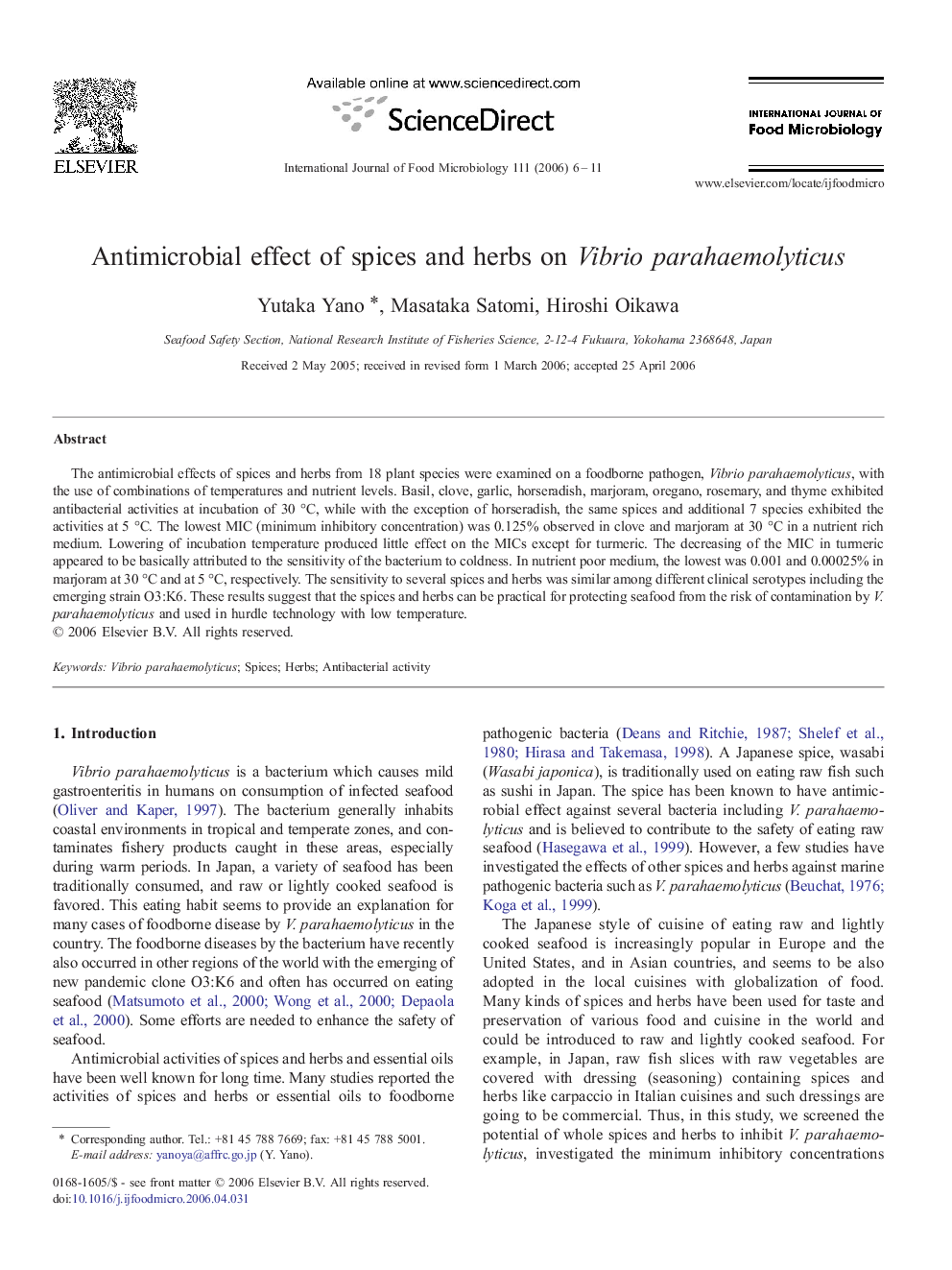| Article ID | Journal | Published Year | Pages | File Type |
|---|---|---|---|---|
| 4370195 | International Journal of Food Microbiology | 2006 | 6 Pages |
The antimicrobial effects of spices and herbs from 18 plant species were examined on a foodborne pathogen, Vibrio parahaemolyticus, with the use of combinations of temperatures and nutrient levels. Basil, clove, garlic, horseradish, marjoram, oregano, rosemary, and thyme exhibited antibacterial activities at incubation of 30 °C, while with the exception of horseradish, the same spices and additional 7 species exhibited the activities at 5 °C. The lowest MIC (minimum inhibitory concentration) was 0.125% observed in clove and marjoram at 30 °C in a nutrient rich medium. Lowering of incubation temperature produced little effect on the MICs except for turmeric. The decreasing of the MIC in turmeric appeared to be basically attributed to the sensitivity of the bacterium to coldness. In nutrient poor medium, the lowest was 0.001 and 0.00025% in marjoram at 30 °C and at 5 °C, respectively. The sensitivity to several spices and herbs was similar among different clinical serotypes including the emerging strain O3:K6. These results suggest that the spices and herbs can be practical for protecting seafood from the risk of contamination by V. parahaemolyticus and used in hurdle technology with low temperature.
